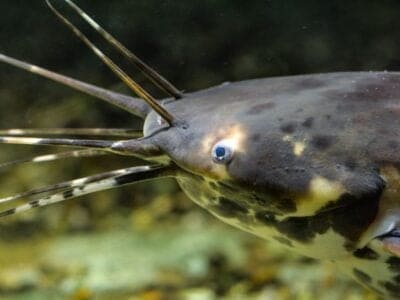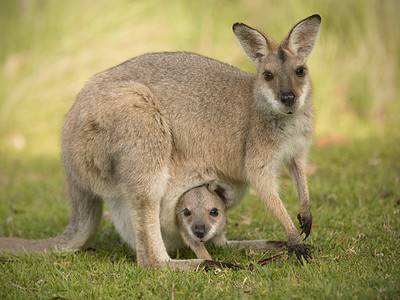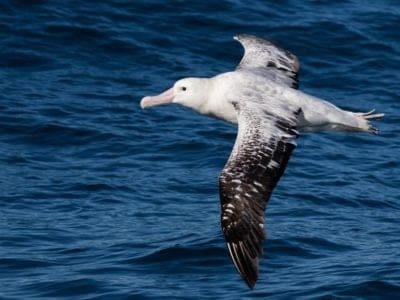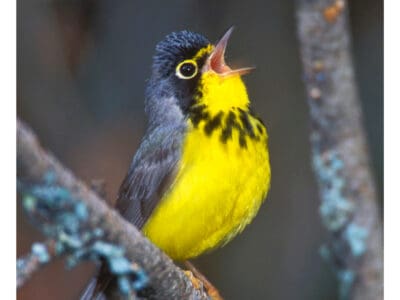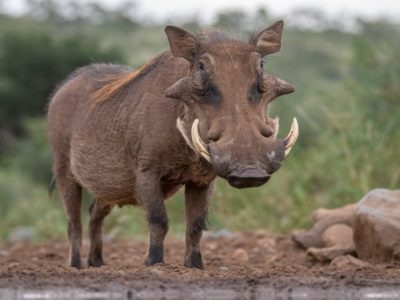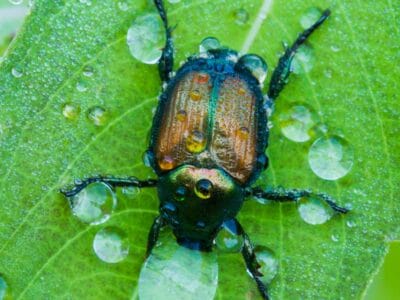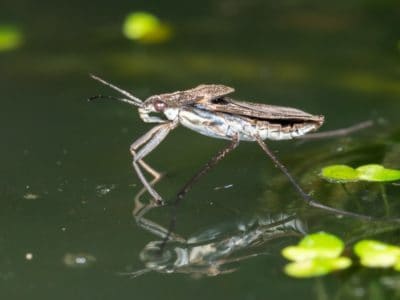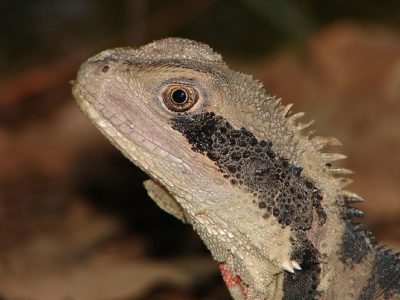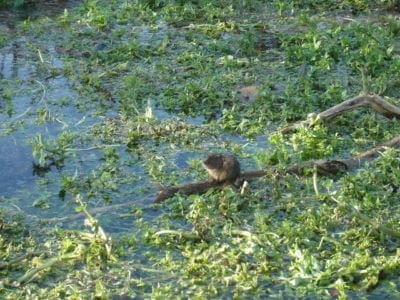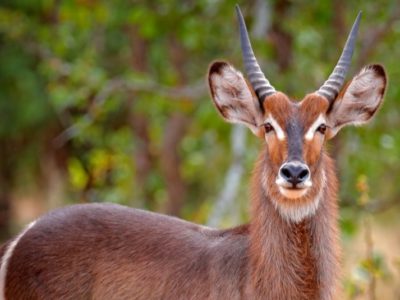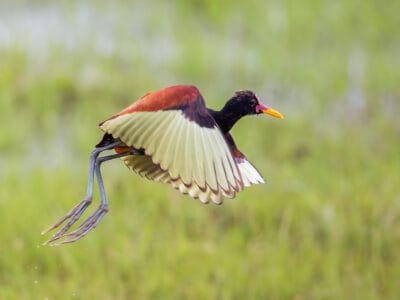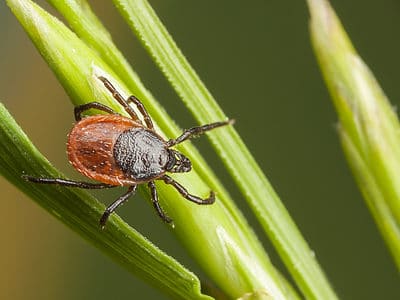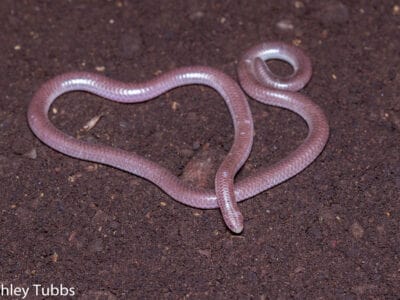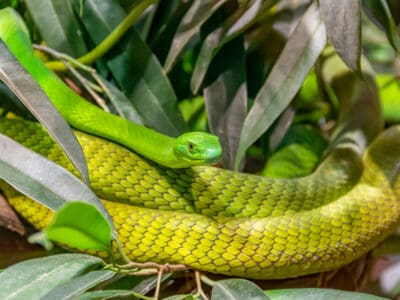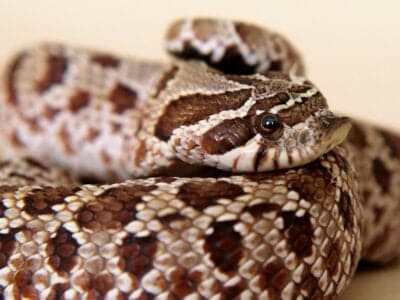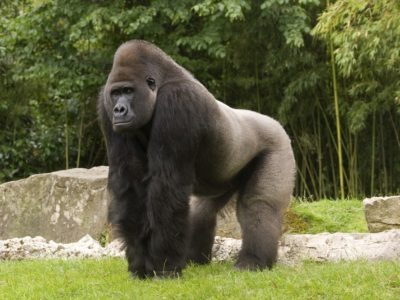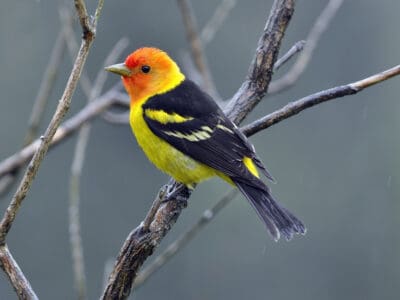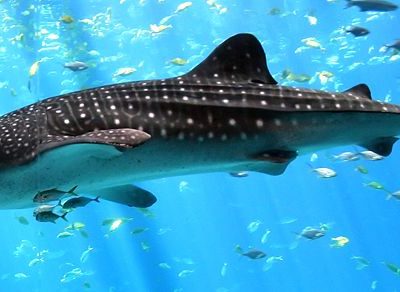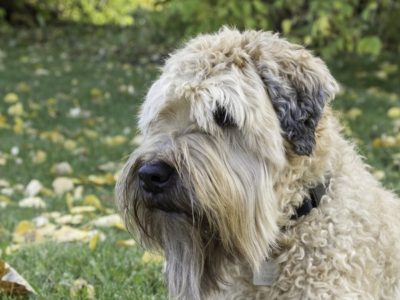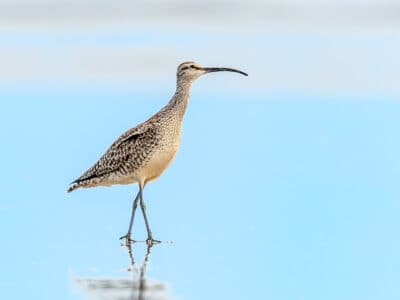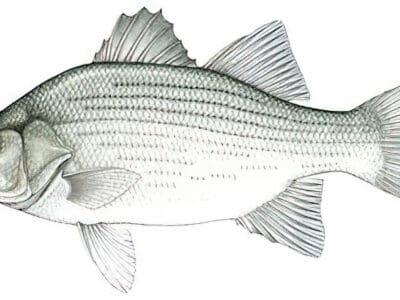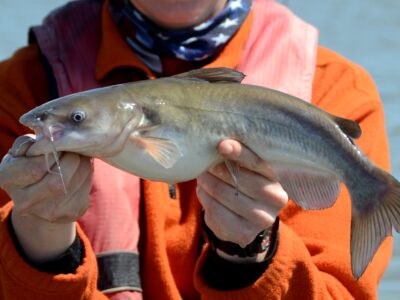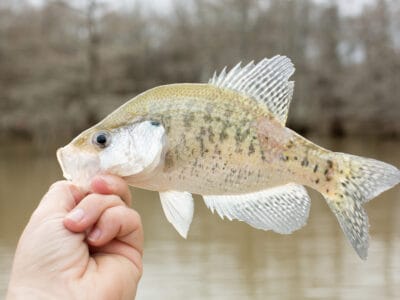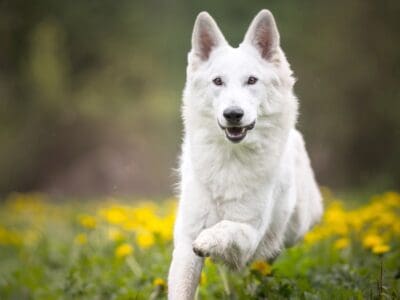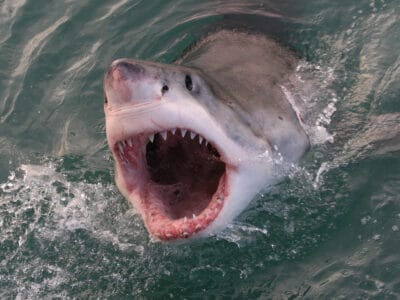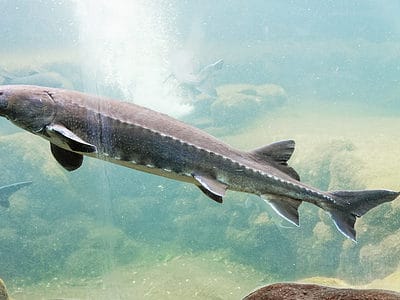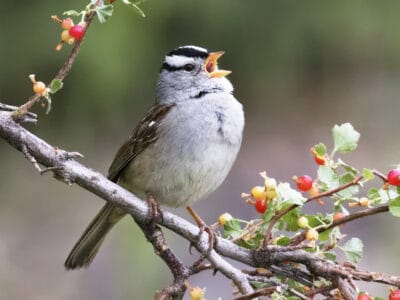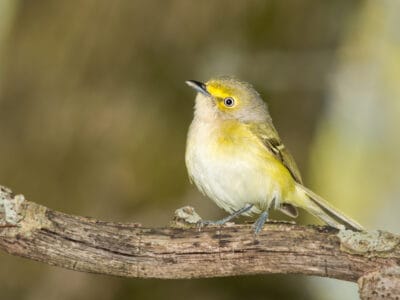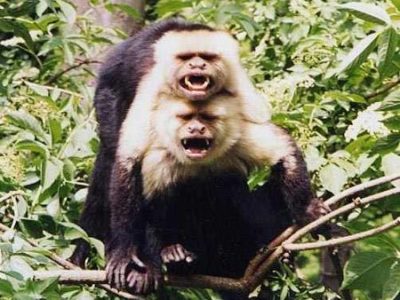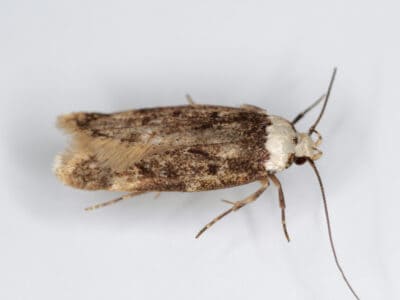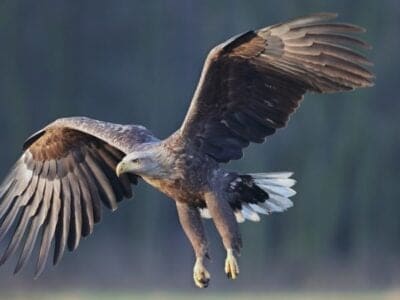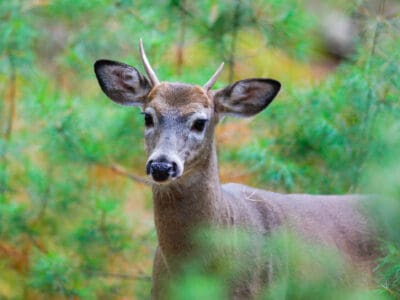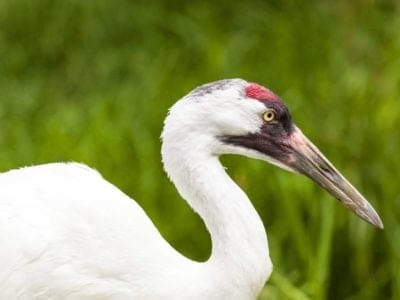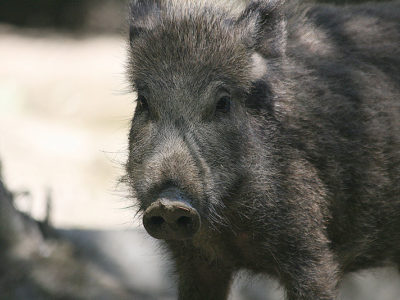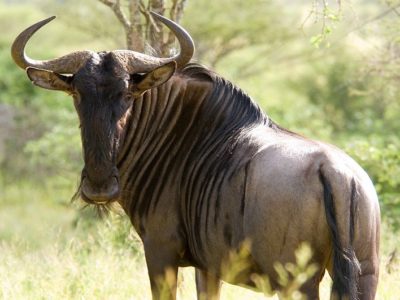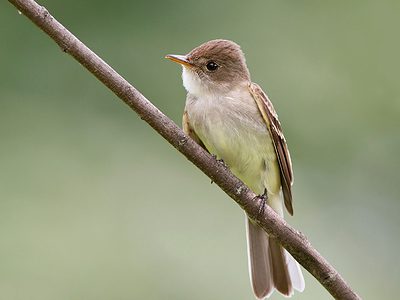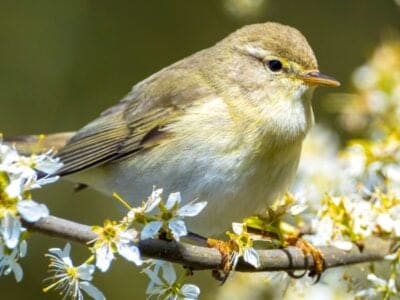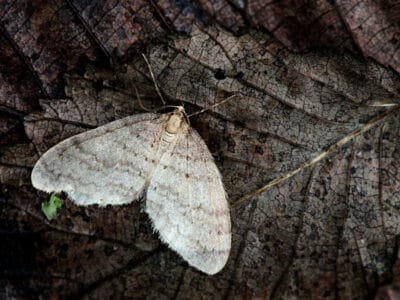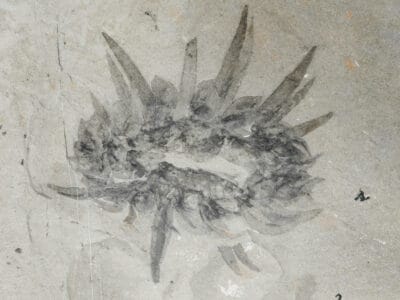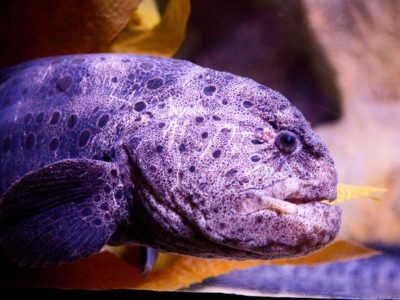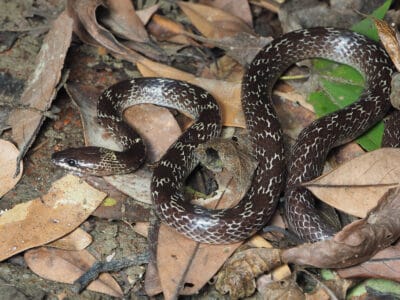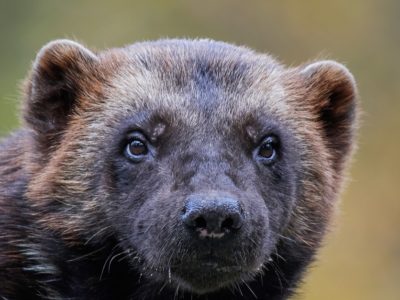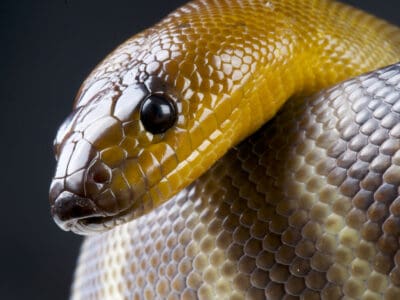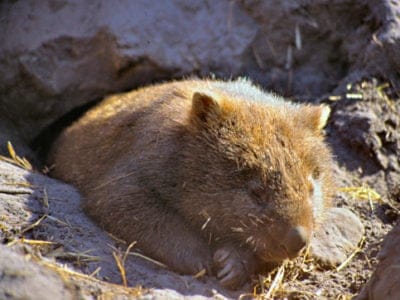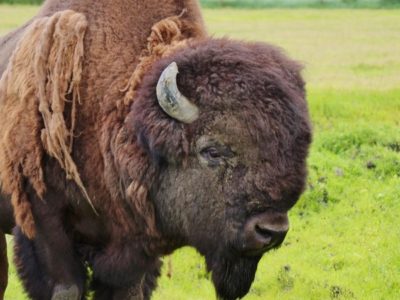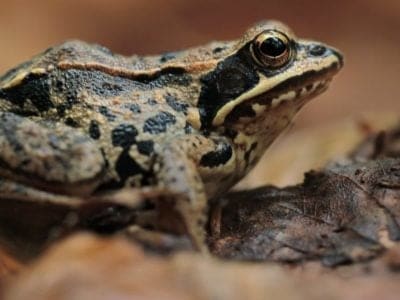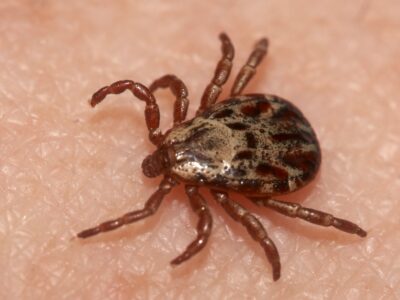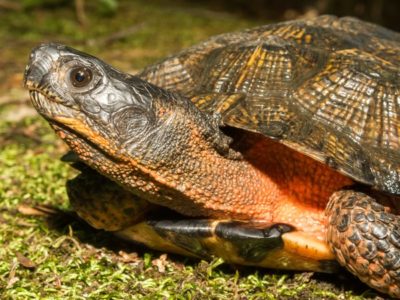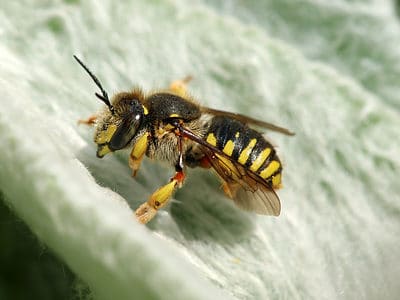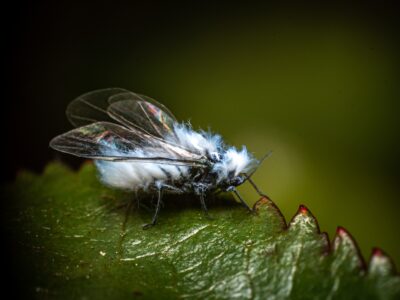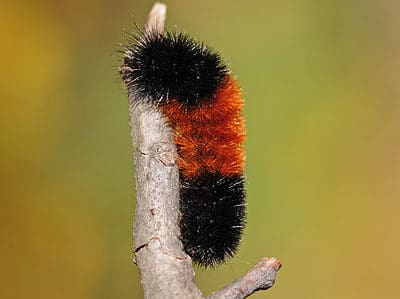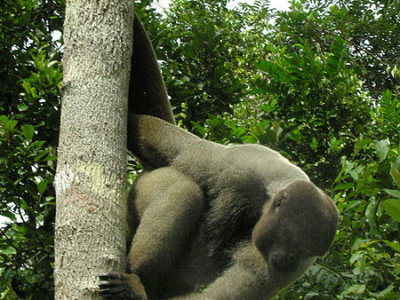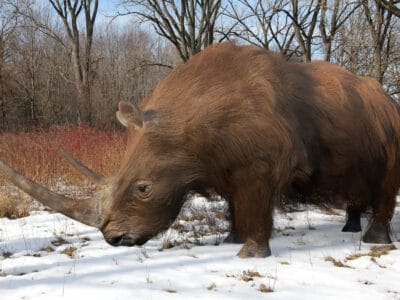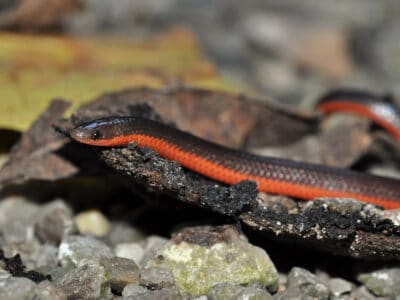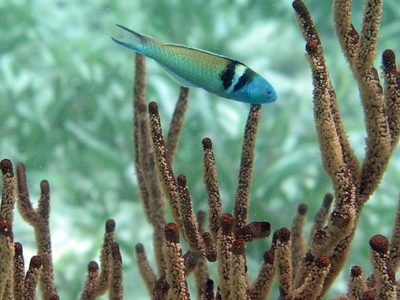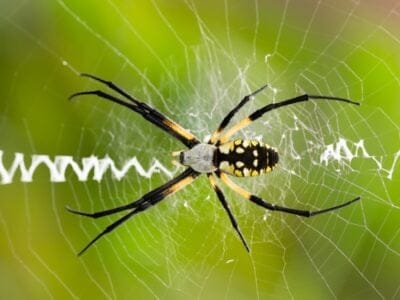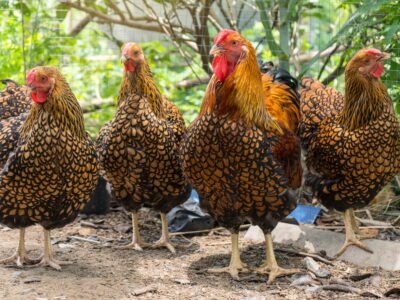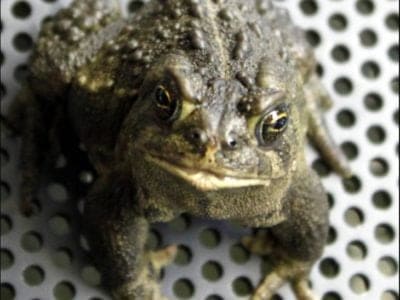Read below for information on 108 different animals that start with the letter W, from the wallaby to the wrasse fish. The most popular animal that starts with the letter W is the white tiger, a rare species that hasn’t been seen in the wild in over 50 years. The least popular W animal is the water vole. Water voles are the largest vole species in the United Kingdom. Fun facts about letter W name animals include:
- Weasels are the smallest carnivorous mammal in the world
- Wildebeest can migrate more than 1,000 miles annually
- Walrus can grow to weight an astonishing 3,700lbs or more, making them the second largest ocean mammal that also comes ashore (the largest is the elephant seal)
Jump to any letter
Alphabetical List of Animals That Start with W
- Wahoo Fish
- Waimanu
- Walking Catfish
- Wallaby
- Walleye Fish
- Walrus
- Wandering Albatross
- Warbler
- Warthog
- Wasp
- Water Beetle
- Water Buffalo
- Water Bug
- Water Dragon
- Water Vole
- Waterbuck
- Wattled Jacana
- Wax Moth
- Weasel
- Weaver Bird
- Weimaraner
- Weimardoodle
- Wels Catfish
- Welsh Black Cattle
- Welsh Corgi
- Welsh Springer Spaniel
- Welsh Terrier
- West Highland Terrier
- West Siberian Laika
- Western Blacklegged Tick
- Western Blind Snake
- Western Diamondback Rattlesnake
- Western Gorilla
- Western Green Mamba
- Western Hognose Snake
- Western Kingbird
- Western Lowland Gorilla
- Western Rat Snake
- Western Rattlesnake (Northern Pacific Rattlesnake)
- Western Tanager
- Westiepoo
- Whale Shark
- Wheaten Terrier
- Whimbrel
- Whinchat
- Whippet
- Whiptail Lizard
- White Bass
- White Butterfly
- White Catfish
- White Crappie
- White Ferret / Albino Ferrets
- White German Shepherd
- White Marlin
- White Rhinoceros
- White Shark
- White Sturgeon
- White Tiger
- White-Crowned Sparrow
- White-Eyed Vireo
- White-Faced Capuchin
- White-shouldered House Moth
- White-tail deer
- White-Tailed Eagle
- Whitetail Deer
- Whiting
- Whoodle
- Whooping Crane
- Wild Boar
- Wildebeest
- Willow Flycatcher
- Willow Warbler
- Winter Moth
- Wire Fox Terrier
- Wirehaired Pointing Griffon
- Wirehaired Vizsla
- Wiwaxia
- Wolf
- Wolf Eel
- Wolf Snake
- Wolf Spider
- Wolffish
- Wolverine
- Woma Python
- Wombat
- Wood Bison
- Wood Duck
- Wood Frog
- Wood Tick
- Wood Turtle
- Woodlouse
- Woodlouse Spider
- Woodpecker
- Woodrat
- Wool Carder Bee
- Woolly Aphids
- Woolly Bear Caterpillar
- Woolly Mammoth
- Woolly Monkey
- Woolly Rhinoceros
- Worm
- Worm Snake
- Wrasse
- Writing Spider
- Wrought Iron Butterflyfish
- Wryneck
- Wyandotte Chicken
- Wyoming Toad
Animals that Start with W
Wahoo Fish
- Kingdom
- Animalia
- Phylum
- Chordata
- Class
- Actinopterygii
- Order
- Scombriformes
- Family
- Scombridae
- Genus
- Acanthrocybium
- Scientific Name
- Acanthocybium solandri
Fun Fact: Wahoo can change colors when they're excited and while they hunt
Wanted for both fishing and eating While a member of the Scombridae family, the wahoo fish is neither a tuna nor a mackerel nor a bonito. Yet, this splendid blue and silver fish is prized both for its ability to put up a fight when it’s hooked and for the sweet taste of its firm, […] Read More
Waimanu
- Kingdom
- Animalia
- Phylum
- Chordata
- Class
- Aves
- Order
- Sphenisciformes
- Genus
- Waimanu
- Scientific Name
- Waimanu manneringi
Fun Fact: The albatross is related to the waimanu!
If you like penguins, you’ll love the now-extinct Waimanu. These birds lived during the Paleocene epoch and were the ancestors of modern-day penguins. Like their descendants, they were not able to fly. Unlike penguins, they did not live their lives in the water. Studying Waimanu fossils helps scientists learn more about how birds evolved. Waimanu […] Read More
Walking Catfish
- Kingdom
- Animalia
- Phylum
- Chordata
- Class
- Actinopterygii
- Order
- Siluriformes
- Family
- Clariidae
- Genus
- Clarias
- Scientific Name
- Clarias batrachus
Fun Fact: The walking catfish can move on land while breathing air
The walking catfish is literally a fish-out-of-water story. Sporting one of the most unusual adaptations in the animal kingdom, it has the ability to “walk” (or rather slither) across the land by wiggling its body back and forth. The purpose of this behavior is to move between bodies of water after heavy rainfall. The walking […] Read More
Wallaby
- Kingdom
- Animalia
- Phylum
- Chordata
- Class
- Mammalia
- Order
- Diprotodontia
- Family
- Macropodidae
- Genus
- Macropus
- Scientific Name
- Macropus
Fun Fact: There are roughly 30 different species!
The main distinction between wallabies and kangaroos is that kangaroos are significantly larger than most wallabies. Like kangaroos, wallabies are marsupials that are part of the family Macropodidae. Native to Australia and Papua New Guinea, wallabies have been introduced to other areas of the world, including New Zealand and the United Kingdom. Of the more than 30 […] Read More
Walleye Fish
- Kingdom
- Animalia
- Phylum
- Chordata
- Class
- Actinopterygii
- Order
- Perciformes
- Family
- Percidae
- Genus
- Sander
- Scientific Name
- Sander vitreus
Fun Fact: Has great night vision
The Walleye Fish is also known as the yellow pike or yellow pickerel. The Walleye is a species of ray-finned fish native to freshwater bodies in many states throughout the midwestern United States and in many regions of Canada. it is a popular game fish for anglers who are seeking a fun fight along with […] Read More
Walrus
- Kingdom
- Animalia
- Phylum
- Chordata
- Class
- Mammalia
- Order
- Carnivora
- Family
- Odobenidae
- Genus
- Odobenus
- Scientific Name
- Odobenus rosmarus
Fun Fact: Inhabits the freezing waters of the Arctic Circle!
The greatest threat to the walrus is climate change. One of the most sociable marine mammals in the world is the lovable walrus. Though these creatures bellow and snort in comical fashion, flash their expressive whiskers, and flaunt their gorgeous ivory tusks in displays of dominance, they can be quite charming. However, they are under […] Read More
Wandering Albatross
- Kingdom
- Animalia
- Phylum
- Chordata
- Class
- Aves
- Order
- Procellariiforms
- Family
- Diomedeidae
- Genus
- Diomedea
- Scientific Name
- Diomedea exulans
Fun Fact: Featured in “The Rime of the Ancient Mariner”
“The Wandering Albatross has the widest wingspan of any living bird” The wandering albatross lives mostly on the wing above the world’s southern seas. As one of the largest birds living, it has been the subject of numerous studies. As a result, researchers have compiled an extensive list of facts about the species. Although the […] Read More
Warbler
- Kingdom
- Animalia
- Phylum
- Chordata
- Class
- Aves
- Order
- Passeriformes
Fun Fact: Warblers are so called because of the trills of their song.
Warblers are so called because of the trills of their song. Warblers are a group of birds also known as perching birds, which means they have feet adapted for perching on trees. They are small birds with plumage ranging from drab colors like gray and brown to brighter ones like red, blue, and yellow. They […] Read More
Warthog
- Kingdom
- Animalia
- Phylum
- Chordata
- Class
- Mammalia
- Order
- Artiodactyla
- Family
- Suidae
- Genus
- Phacochoerus
- Scientific Name
- Phacochoerus africanus
Fun Fact: Has two sets of tusks on it's face!
“Warthogs are herbivores by choice, omnivores by necessity.” A large member of the swine family, the warthog is an animal species that is best known for its four sharp tusks and padded bumps, or warts, on its face. The females of the species are quite social and live out their lives in family groups called […] Read More
Wasp
- Kingdom
- Animalia
- Phylum
- Arthropoda
- Class
- Insecta
- Order
- Hymenoptera
Fun Fact: There are around 75,000 recognised species!
Most wasps build their nests from chewed-up wood or mud! Wasps are some of the world’s most diverse creatures as this category of insects has more than 100,000 species worldwide. While most people think of wasps as aggressive insects that live in large colonies, the vast majority of wasps are peaceful, solitary creatures. Although related […] Read More
Water Beetle
- Kingdom
- Animalia
- Phylum
- Arthropoda
- Class
- Insecta
- Order
- Coleoptera
- Family
- Hydrophilidae
- Genus
- Hydrochara
- Scientific Name
- Coleoptera hydrophilidae
Fun Fact: Water beetles bite; they use their legs to inject venomous digestive saliva
A water beetle is not a specific species; it’s just a generalized term for any beetle living in water at any time of its life cycle. While the majority of water beetles can only survive in freshwater, several marine species inhabit the littoral and intertidal zone. There are an estimated 2000 species of true water […] Read More
Water Buffalo
- Kingdom
- Animalia
- Phylum
- Chordata
- Class
- Mammalia
- Order
- Artiodactyla
- Family
- Bovidae
- Genus
- Bubalus
- Scientific Name
- Bubalus bubalis
Fun Fact: Has been domesticated for thousands of years!
“The water buffalo is known as the living tractor of the East.” The water buffalo, also known as the Asian buffalo, Asiatic water buffalo, or arni, is the second largest member of the bovid family, and it is closely related to yak, bison, African buffalo, ox, and various other forms of wild cattle. Its great […] Read More
Water Bug
- Kingdom
- Animalia
- Phylum
- Arthropoda
- Class
- Insecta
- Order
- Hemiptera
- Family
- Heteroptera
- Genus
- Nepomorpha
Fun Fact: Some species of water bugs can deliver a painful bite when handled.
Some species of water bugs can deliver a painful bite when handled. Summary The name “water bug” refers to members of an infraorder of insects known as Nepomorpha. This group of insects consists of more than 2000 species of true bugs found worldwide except in the polar regions. Most species live in freshwater habitats. They […] Read More
Water Dragon
- Kingdom
- Animalia
- Phylum
- Chordata
- Class
- Reptilia
- Order
- Squamata
- Family
- Agamidae
- Genus
- Physignathus
- Scientific Name
- Physignathus
Fun Fact: Spends most of it's time in the trees!
“Water dragons can run very quickly when threatened and remain submerged for as long as 90 minutes.” Water dragons are agamid lizards native to southern China, the Southeast Asian countries of Thailand, Cambodia, Vietnam, Laos, and Australia. The two main species are the Chinese Water Dragon, along with the Australian Water dragon found on the […] Read More
Water Vole
- Kingdom
- Animalia
- Phylum
- Chordata
- Class
- Mammalia
- Order
- Rodentia
- Family
- Cricetidae
- Genus
- Arvicola
- Scientific Name
- Arvicola amphibius
Fun Fact: The largest Vole species in the UK!
Water Vole Classification and Evolution The Water Vole is a small species of semi-aquatic rodent that is found along the riverbanks throughout the UK and Europe. They are similar in appearance to Mice and Rats but have a number of distinctive differences including a flatter snout and a shorter tail. Also known as the European […] Read More
Waterbuck
- Kingdom
- Animalia
- Phylum
- Chordata
- Class
- Mammalia
- Order
- Artiodactyla
- Family
- Bovidae
- Genus
- Kobus
- Scientific Name
- Kobus ellipsiprymnus
Fun Fact: Often flee into water to escape predators
Emit a foul-smelling oil from their skin. Summary The waterbuck belongs to the genus Kobus in the bovine family Bovidae. It ranks as the largest member of its genus and one of the largest antelopes found in Africa. Waterbucks are sedentary and gregarious, with most herds containing anywhere from 6 to 30 individuals. You can […] Read More
Wattled Jacana
- Kingdom
- Animalia
- Phylum
- Chordata
- Class
- Aves
- Order
- Charadriiformes
- Family
- Jacanidae
- Genus
- Jacana
- Scientific Name
- Jacana Jacana
Fun Fact: They are typically noisy birds but take on a soft tone with their young.
“This South American species has black and chestnut plumage.” Summary The wattled jacana (Jacana jacana) is a medium-sized wader native to most of South America. Freshwater wetlands are their preferred environments, where they forage on floating vegetation, using their elongated toes to turn over plants in the hopes of catching an invertebrate. These birds are […] Read More
Wax Moth
- Kingdom
- Animalia
- Phylum
- Arthropoda
- Class
- Insecta
- Order
- Lepidoptera
- Family
- Pyralidae
- Genus
- Achroia
- Scientific Name
- Galleria mellonella
Fun Fact: The Wax Moth larvae are more dangerous than the adult.
The Wax Moth has two different species; the Greater Wax Moth and the Lesser Wax Moth. Both the species, prey on hives and eat beeswax. They are quite destructive and can rapidly chew through combs to devour wax, pollen, larval honey bees’ remains, honey bee cocoon silk, and even enclosed honey bee feces. But they […] Read More
Weasel
- Kingdom
- Animalia
- Phylum
- Chordata
- Class
- Mammalia
- Order
- Carnivora
- Family
- Mustelidae
- Genus
- Mustela
- Scientific Name
- Mustela nivalis
Fun Fact: The smallest carnivorous mammal in the world!
Weasel Classification and Evolution The Weasel is a small-sized carnivorous mammal that is found on every continent with the exception of Australia and its surrounding islands, along with the more hostile polar regions. There are numerous Weasel animal species that all vary in size, color, and slightly with their behaviors depending on where in the […] Read More
Weaver Bird
- Kingdom
- Animalia
- Phylum
- Chordata
- Class
- Aves
- Order
- Passeriformes
- Family
- Ploceidae
- Genus
- Ploceus
- Scientific Name
- Ploceus cucullatus
Fun Fact: The weaver constructs an elaborate nest for the breeding season
True weavers have the amazing ability to build complex nests in the breeding season. The weaver is a family of songbirds originating from Africa and Asia. While not all members of this family are technically called weavers, most of them do construct elaborate nests and breed together in sizable colonies. These nests are some of […] Read More
Weimaraner
- Kingdom
- Animalia
- Phylum
- Chordata
- Class
- Mammalia
- Order
- Carnivora
- Family
- Canidae
- Genus
- Canis
- Scientific Name
- Canis lupus
Fun Fact: The Weimaraner is nicknamed the gray ghost.
The Weimaraner is also nicknamed the “gray ghost” for its light gray coat and eye color. The Weimaraner is a big sporting dog that originated from 19th century Germany. The very first members of this breed were used by the German aristocracy to hunt large game such as boar, deer, and bears. After these animals […] Read More
Weimardoodle
- Kingdom
- Animalia
- Phylum
- Chordata
- Class
- Mammalia
- Order
- Carnivora
- Family
- Canidae
- Genus
- Canis
- Scientific Name
- Canis lupus
Fun Fact: This dog is also known as the Weimarpoo, the Weimaranerpoo, and the Weimaranerdoodle.
Despite their physical differences, both the Weimaraner and the Poodle were bred in Germany as hunting dogs. The former was a more conventional “gun dog,” while the latter was built to retrieve game from the water with its strong swimming ability. This deep hunting pedigree shows up in the Weimardoodle’s exceptional athleticism. First bred around […] Read More
Wels Catfish
- Kingdom
- Animalia
- Phylum
- Chordata
- Class
- Actinopterygii
- Order
- Siluriformes
- Family
- Siluridae
- Genus
- Silurus
- Scientific Name
- Silurus glanis
Fun Fact: The Wels catfish is O the largest freshwater fish in the world.
The wels catfish is among the giants of the freshwater world. Despite their size, this massive behemoth is otherwise just like most catfish. They prowl around the bottom of freshwater rivers and lakes in search of food to eat. Popular in both commercial and recreational fishing, they are sometimes caught by people for the taste […] Read More
Welsh Black Cattle
- Kingdom
- Animalia
- Phylum
- Chordata
- Class
- Mammalia
- Order
- Artiodactyla
- Family
- Bovidae
- Genus
- Bos
- Scientific Name
- Bos taurus taurus
Fun Fact: Welsh Black Cattle were once used as currency in Wales and referred to as “black gold”.
Welsh black cattle are known for their adaptability to the harshest climates. Read More
Welsh Corgi
- Kingdom
- Animalia
- Phylum
- Chordata
- Class
- Mammalia
- Order
- Carnivora
- Family
- Canidae
- Genus
- Canis
- Scientific Name
- Canis lupus
Fun Fact: There are two distinct breeds!
The Welsh corgi is a small herding dog that probably originated from the countryside of Wales sometime before the year 1000 AD. Its small size is well-suited for nipping at the heels of cattle or sheep to herd them around their grazing lands or into pens. The breed can be identified by its short but […] Read More
Welsh Springer Spaniel
- Kingdom
- Animalia
- Phylum
- Chordata
- Class
- Mammalia
- Order
- Carnivora
- Family
- Canidae
- Genus
- Canis
- Scientific Name
- Canis familiaris
Fun Fact: Due to being so attached to their owners, the Welsh Springer Spaniel does not do well with being left alone and can experience separation anxiety.
The Welsh springer spaniel’s birthplace is unknown, but many believe they are derived from the English cocker spaniel, making this breed well known for its excellent blood sport traits. These dogs were bred to assist huntsmen in locating feathered game by using their incredible sense of smell and projecting bark. The Different Types of Springer […] Read More
Welsh Terrier
- Kingdom
- Animalia
- Phylum
- Chordata
- Class
- Mammalia
- Order
- Carnivora
- Family
- Canidae
- Genus
- Canis
- Scientific Name
- Canis lupus
Fun Fact: The Welsh Terrier has the strength and tenacity to take on foxes and badgers.
The Welsh Terrier was bred in northern Wales for hunting foxes, badgers, otters, and rodents. The Welsh Terrier is a breed of long-legged earth dogs with an iron constitution and exceptionally strong spirit. It was developed in the 18th century (and perhaps even earlier) for hunting foxes, badgers, and otters in the rugged terrain of […] Read More
West Highland Terrier
- Kingdom
- Animalia
- Phylum
- Chordata
- Class
- Mammalia
- Order
- Carnivora
- Family
- Canidae
- Genus
- Canis
- Scientific Name
- Canis Lupus
Fun Fact: Most commonly white in colour!
While hunting, the West Highland Terrier uses its compact size to burrow underground and wriggle into tight underground caverns. That makes the Westie a go-to in many parts of the globe as a hunting companion. The West Highland Terrier is a large dog in a small body. Flush with energy, stubborn and curious, even-tempered and […] Read More
West Siberian Laika
- Kingdom
- Animalia
- Phylum
- Chordata
- Class
- Mammalia
- Order
- Carnivora
- Family
- Canidae
- Genus
- Canis
- Scientific Name
- Canis lupus familiaris
Fun Fact:
Although it’s quite the mouthful, the West Siberian Laika is also called the Zapadno-Sibirskaia Laika because of its Russian origin! Introduction West Siberian Laikas were originally used as farm dogs by aboriginal people living in the outlying parts of Russia until they were recognized for their hunting ability. Part of the Spitz family of dogs, […] Read More
Western Blacklegged Tick
- Kingdom
- Animalia
- Phylum
- Arthropoda
- Class
- Arachnida
- Order
- Ixodida
- Family
- Ixodidae
- Genus
- Ixodes
- Scientific Name
- Ixodes pacificus
Fun Fact: Western blacklegged ticks are only found in the west coast of the United States
Western blacklegged ticks are a species of hard ticks (ticks with hard cuticles on their backs) native to the west coast of the United States. They are ectoparasites that feed on the blood of their hosts. Apart from their parasitic nature, they are also vectors of diseases such as Lyme disease, anaplasmosis and so on. […] Read More
Western Blind Snake
- Kingdom
- Animalia
- Phylum
- Chordata
- Class
- Reptilia
- Order
- Squamata
- Family
- Leptotyphlopidae
- Genus
- Rena
- Scientific Name
- Rena humilis
Fun Fact: Western blind snakes are flourescent in black light!
The snake that looks like an earthworm The western blind snake is a member of one of the oldest snake families. They are so ancient that they still have remnants of pelvic girdles that you can see as tiny spurs if you flip the snake over. Harmless to humans but murder on colonies of ants […] Read More
Western Diamondback Rattlesnake
- Kingdom
- Animalia
- Phylum
- Chordata
- Class
- Reptilia
- Order
- Squamata
- Family
- Viperidae
- Genus
- Crotalus
- Scientific Name
- Crotalus atrox
Fun Fact: They replace their fangs 2-4 times per year!
Western diamondback rattlesnakes are an icon of the U.S. West. Featured in many movies, the sound of a rattlesnake is unmistakable. It’s also disturbing if you grew up in an area where you share nature with them. They’re long and heavy-bodied venomous snakes, the second-longest in North America. These snakes are reclusive and avoid people […] Read More
Western Gorilla
- Kingdom
- Animalia
- Phylum
- Chordata
- Class
- Mammalia
- Order
- Primates
- Family
- Hominidae
- Genus
- Gorilla
- Scientific Name
- Gorilla Gorilla
Fun Fact: There are two sub-species!
When thinking of gorillas, most people conjure a vision of an angry, snarling great ape – beating his chest before charging to attack. Some might think of “King Kong” – another famous angry ape, or the gorillas in “Planet of the Apes” – more angry apes! In reality, gorillas are peace-loving creatures that like to […] Read More
Western Green Mamba
- Kingdom
- Animalia
- Phylum
- Chordata
- Class
- Reptilia
- Order
- Squamata
- Family
- Elapidae
- Genus
- Dendroaspis
- Scientific Name
- Dendroaspis viridis
Fun Fact:
Western green mambas can reach a length of up to eight feet. A collection of bright green scales is just one of the many notable things about this snake. It can also travel through its tropical forest or savanna habitat at an average speed of 7 miles per hour! The western green mamba consumes a […] Read More
Western Hognose Snake
- Kingdom
- Animalia
- Phylum
- Chordata
- Class
- Reptilia
- Order
- Squamata
- Family
- Colubridae
- Genus
- Heteredon
- Scientific Name
- Heteredon nasicus
Fun Fact: Primarily solitary, these snakes only communicate with one another during breeding season.
The western hognose snake is a capable actor that will transition from puffing up like a cobra to dramatically playing dead in the face of predators, but they’re actually loath to bite. That’s an obvious advantage when looking for a pet snake — but reptile enthusiasts are also drawn to the array of colors to […] Read More
Western Kingbird
- Kingdom
- Animalia
- Phylum
- Chordata
- Class
- Aves
- Order
- Passeriformes
- Family
- Tyrannidae
- Genus
- Tyrannus
- Scientific Name
- Tyrannus verticalis
Fun Fact: Western kingbirds have hidden red crown feathers that they can raise when threatened!
Western Kingbird Summary “Western kingbirds have hidden red crown feathers that they can raise when threatened!” The western kingbird is a large species of tyrant flycatcher native to North America. They are aggressive when necessary and are known to chase away other birds that tread too close. This includes larger birds of prey, like red-tailed […] Read More
Western Lowland Gorilla
- Kingdom
- Animalia
- Phylum
- Chordata
- Class
- Mammalia
- Order
- Primates
- Family
- Hominidae
- Genus
- Gorilla
- Scientific Name
- Gorilla gorilla gorilla
Fun Fact: One of the great apes!
“The western lowland gorilla has been observed using basic tools in the wild in order to more effectively gather food“ The Western Lowland Gorilla is an intelligent animal sharing 98% of its DNA with that of humans. Perhaps the most famous Western Gorilla of all time is Koko, the gentle great ape who learned American […] Read More
Western Rat Snake
- Kingdom
- Animalia
- Phylum
- Chordata
- Class
- Reptilia
- Order
- Squamata
- Family
- Colubridae
- Genus
- Pantherophis
- Scientific Name
- Pantherophis obsoletus
Fun Fact: Western rat snakes have special scales on their belly that help them climb up trees.
Western rat snakes are one of the longest snakes in North America; the longest one on record measured 111 inches. They are long, slender, non-venomous constrictors that are terrific climbers. These snakes are members of the Colubridae family and are closely related to king snakes. They’re a wonderful natural pest control that will seek out […] Read More
Western Rattlesnake (Northern Pacific Rattlesnake)
- Kingdom
- Animalia
- Phylum
- Chordata
- Class
- Reptilia
- Order
- Squamata
- Family
- Viperidae
- Genus
- Crotalus
- Scientific Name
- Crotalus oreganus
Fun Fact: Western rattlesnakes are shy and try to avoid people whenever possible.
Most western rattlesnakes are small, and only measure about three feet long. The western rattlesnake is native to the western United States and Southwestern Canada. It’s a medium-sized rattler that’s the only species in many parts of native range. It’s not a western diamondback, even though their names are similar. Rattlesnakes are the notorious rattling […] Read More
Western Tanager
- Kingdom
- Animalia
- Phylum
- Chordata
- Class
- Aves
- Order
- Passeriformes
- Family
- Cardinalidae
- Genus
- Piranga
- Scientific Name
- Piranga Ludoviciana
Fun Fact: They migrate farther north than any other tanager.
The western tanager migrates farther north than any other tanager. Summary The western tanager is native to the Americas, wintering in Mexico and Central America before migrating to the Western United States and Canada. They spend their days on the tops of coniferous trees, searching for food and feeding their young. They may be challenging […] Read More
Westiepoo
- Kingdom
- Animalia
- Phylum
- Chordata
- Class
- Mammalia
- Order
- Carnivora
- Family
- Canidae
- Genus
- Canis familiaris
Fun Fact: This dog is known for cocking its head in a curious manner when listening to its owner.
Though a Westiepoo is small in size, it has a strong bark that can scare away strangers on the property. Westiepoos are social, intelligent dogs that are full of curiosity. They result from breeding a West Highland White terrier with a miniature poodle. These dogs date back to the 1970s. They are believed to have […] Read More
Whale Shark
- Kingdom
- Animalia
- Phylum
- Chordata
- Class
- Chondrichthyes
- Order
- Orectolobiformes
- Family
- Rhincodontidae
- Genus
- Rhincodon
- Scientific Name
- Rhincodon Typus
Fun Fact: The largest species of fish in the world!
Often growing to 40 feet or more, the mysterious whale shark is the largest living fish! Despite their name, whale sharks are not whales, they are actually fish. Their name comes from their huge size. Often growing to 40 feet long or more, the whale shark is a fish that is about the size of a […] Read More
Wheaten Terrier
- Kingdom
- Animalia
- Phylum
- Chordata
- Class
- Mammalia
- Order
- Carnivora
- Family
- Canidae
- Genus
- Canis
- Scientific Name
- Canis lupus
Fun Fact: Originally bred as a farm dog, the Wheaten Terrier can be very protective of its domain.
The Wheaten Terrier was once known as the “poor man’s Wolfhound.” The Wheaten Terrier is a small but long-legged terrier with an unusually soft, silky, and wavy coat. As the name implies, this coat is characterized by a pale yellow wheat-like color, ranging from beige to golden. The long facial hair, which nearly obscures the […] Read More
Whimbrel
- Kingdom
- Animalia
- Phylum
- Chordata
- Class
- Aves
- Order
- Charadriiformes
- Family
- Scolopacidae
- Genus
- Numenius
- Scientific Name
- Numenius phaeopus, Numenius hudsonicus
Fun Fact: The fastidious whimbrel sometimes washes off its prey before it eats it.
“The whimbrel is a wide-ranging shorebird.” The unshowy looks of this shorebird — its long, curved bill is merely interesting and nothing as sensational as a toucan’s — belies its sheer stamina. Every year the whimbrel migrates from its Arctic breeding grounds to its winter habitat in places as far south as Bolivia or Australia […] Read More
Whinchat
- Kingdom
- Animalia
- Phylum
- Chordata
- Class
- Aves
- Order
- Passeriformes
- Family
- Muscicapidae
- Genus
- Saxicola
- Scientific Name
- Saxicola rebetra
Fun Fact: The whinchat can imitate the songs of at least a dozen other tpes of birds!
Whinchats are abundant, but their numbers are declining. The English name for this diminutive bird comes from its habit of hanging around the gorse plants of its native western Europe and Britain and its call. It’s solitary, though both parents raise the young, and it makes a surprisingly strenuous migration from Europe to sub-Saharan Africa. […] Read More
Whippet
- Kingdom
- Animalia
- Phylum
- Chordata
- Class
- Mammalia
- Order
- Carnivora
- Family
- Canidae
- Genus
- Canis
- Scientific Name
- Canis lupus
Fun Fact: Quiet, gentle and restful dogs!
The Whippet, also known as the English Whippet or Snap Dog, is the fastest dog of its weight with the ability to reach speeds of up to 35mph. The medium-sized breed is also called the “Poor Man’s Racehorse” and “Lightning Rag Dog.” Although it is thought of as a small Greyhound, it has a unique […] Read More
Whiptail Lizard
- Kingdom
- Animalia
- Phylum
- Chordata
- Class
- Reptilia
- Order
- Squamata
- Family
- Teiidae
Fun Fact: Many whiptail species reproduce asexually.
“Many whiptail lizards reproduce sexually.” The whiptail lizard’s evocative name reflects its uniquely long and slender tail which can be up to three times the length of this petite reptile’s body. But with dozens of species spread throughout diverse habitats as north as the United States and deeper south into Latin America, each lizard’s dimensions […] Read More
White Bass
- Kingdom
- Animalia
- Phylum
- Chordata
- Class
- Actinopterygii
- Order
- Perciformes
- Family
- Moronidae
- Genus
- Morone
- Scientific Name
- Morone chrysops
Fun Fact: Silvery white fish popular with anglers
The white bass is a freshwater fish native to North America, and although it is often hunted for food, many people dislike its distinctive fishy taste. The white bass is a freshwater fish that is native to North America. It is a popular game fish and is often consumed as food. It is found in […] Read More
White Butterfly
- Kingdom
- Animalia
- Phylum
- Arthropoda
- Class
- Insecta
- Order
- Lepidoptera
- Family
- Pieridae
- Genus
- Pieris
- Scientific Name
- Pieris rapae
Fun Fact: This butterfly determines the smell and taste of a flower with its feet.
“They are called cabbage white butterflies because they eat cabbage leaves while the caterpillar stage of life.” The white butterfly lives all over the world including Australia, Asia, and Europe. There are a total of 1,100 species of white butterflies worldwide. They are found in gardens, forests, and traveling over fields of weeds. Their bright, […] Read More
White Catfish
- Kingdom
- Animalia
- Phylum
- Chordata
- Class
- Actinopterygii
- Order
- Siluriformes
- Family
- Ictaluridae
- Genus
- Ameiurus
- Scientific Name
- A. catus
Fun Fact: White catfish can grow up to 37 inches in size.
White Catfish Summary The white catfish (Ameiurus catus), also known as the white bullhead, is one of the smallest species of the large North American catfish. They are native to the coastal river systems in the eastern United States and are freshwater fish that prefer to inhabit rivers, lakes, reservoirs, and streams with muddy bottoms. […] Read More
White Crappie
- Kingdom
- Animalia
- Phylum
- Chordata
- Class
- Actinopterygii
- Order
- Perciformes
- Family
- Centrarchidae
- Genus
- Pomoxis
- Scientific Name
- Pomoxis annularis
Fun Fact: Common freshwater fish in North America
The white crappie belongs to the sunfish family. White crappies inhabit freshwater, from lakes and ponds to small streams and big rivers. White Crappie Summary The white crappie is most often found in warm, muddy water. It is very similar to the black crappie, with just a few visual differences. The color is generally lighter […] Read More
White Ferret / Albino Ferrets
- Kingdom
- Animalia
- Phylum
- Chordata
- Class
- Mammalia
- Order
- Carnivora
- Family
- Mustelidae
- Genus
- Mustela
- Scientific Name
- Mustela putorius furo
Fun Fact: There are two different types of white ferrets!
The emergence of white fur, like the white Ferret, in nature is often a rousing success or a lethal failure and rarely little in between. The snowshoe hare — which shows off-white fur to hide in the snow during the winter and a browner coat in the off-seasons — has learned that even in the […] Read More
White German Shepherd
- Kingdom
- Animalia
- Phylum
- Chordata
- Class
- Mammalia
- Order
- Carnivora
- Family
- Canidae
- Genus
- Canis
- Scientific Name
- Canis lupus
Fun Fact: It was once thought that White German Shepherds were albinos, but that is not the case. Its white coat is part of the overall German Shepherd genetic composition.
Introduction The White German Shepherd is a variation of the German Shepherd, known in Great Britain as the Alsatian, a rugged, hardworking dog used worldwide for jobs ranging from herding to protection to military and police work. Confident, intelligent, and loyal, it is a sturdy, muscular, and athletic dog that can retain and perform a […] Read More
White Marlin
- Kingdom
- Animalia
- Phylum
- Chordata
- Class
- Actinopterygii
- Order
- Istiophoriformes
- Family
- Istiophoridae
- Genus
- Kajikia
- Scientific Name
- Kajikia albida
Fun Fact: speedy open ocean billfish
A species of billfish with a long sword-like bill, the white marlin, lives in warm ocean waters around the world. They are a highly migratory species, moving between different regions in search of food and favorable conditions. White marlins are apex predators of the ocean and are considered key species in the marine ecosystem. They […] Read More
White Rhinoceros
- Kingdom
- Animalia
- Phylum
- Chordata
- Class
- Mammalia
- Order
- Perissodactyla
- Family
- Rhinocerotidae
- Genus
- Ceratotherium
- Scientific Name
- Ceratotherium simum
Fun Fact: The second largest animal on the land!
“The largest of all rhino species” Known for its square upper lip, large two horns, and incredible size, the white rhino once roamed across southern and northern Africa. At the start of the 20th century, the white rhino population dwindled to as few as 50 individuals. Today, the white rhino shows both the promise of […] Read More
White Shark
- Kingdom
- Animalia
- Phylum
- Chordata
- Class
- Chondrichthyes
- Order
- Lamniformes
- Family
- Lamnidae
- Genus
- Carcharodon
- Scientific Name
- Carcharodon carcharias
Fun Fact: White Sharks live in all of the world's oceans.
This formidable predator, the Great White Shark, has one of the most recognizable sets of teeth of all sharks. Just hearing a couple of tones on a movie soundtrack is enough to have anyone in the water scanning the ocean for the telltale sign of a shark fin. While movies like “Jaws” take some Hollywood […] Read More
White Sturgeon
- Kingdom
- Animalia
- Phylum
- Chordata
- Class
- Actinopterygii
- Order
- Acipenseriformes
- Family
- Acipenseridae
- Genus
- Acipenser
- Scientific Name
- Acipenser transmontanus
Fun Fact: They don't have any teeth!
The white sturgeon (also called the Oregon, Sacramento, Pacific, or Columbia sturgeon) is a massive, prehistoric fish that can survive in both freshwater and saltwater environments. Though it’s a popular sport fish due to its size and tasty meat, most regions have strict regulations to prevent overfishing. This sharklike fish has survived on Earth for […] Read More
White Tiger
- Kingdom
- Animalia
- Phylum
- Chordata
- Class
- Mammalia
- Order
- Carnivora
- Family
- Felidae
- Genus
- Panthera
- Scientific Name
- Panthera tigris tigris
Fun Fact: None have been seen in the wild for 50 years!
Key Facts White tigers are not albinos since their fur possesses a degree of pigment.Although they once roamed throughout India and neighboring countries, no white tiger has been sighted in the last 50 years.Owing to their mutated genes as well as the lack of genetic diversity caused by inbreeding, white tigers are believed to have […] Read More
White-Crowned Sparrow
- Kingdom
- Animalia
- Phylum
- Chordata
- Class
- Aves
- Order
- Passeriformes
- Family
- Passerellidae
- Genus
- Zonotrichia
- Scientific Name
- Zonotrichia leucophrys
Fun Fact: Males learn distinct songs from the community they grew up in and continue to sing in the same dialect as adults.
“They have different song dialects and prefer to sing the one they grew up with.” Summary The white-crowned sparrow (Zonotrichia leucophrys) is a medium-sized New World sparrow native to North America. It inhabits alpine meadows and tundra in Alaska and Northern Canada but chooses to stay in thickets and backyards in its US and Mexico […] Read More
White-Eyed Vireo
- Kingdom
- Animalia
- Phylum
- Chordata
- Class
- Aves
- Order
- Passeriformes
- Family
- Vireonidae
- Genus
- Vireo
- Scientific Name
- Vireo griseus
Fun Fact: During courtship, males put on exciting displays by fluffing their plumage, spreading their tails, and letting out a whining call.
Vireo griseus, or the white-eyed vireo, are small birds belonging to the Vireonidae family and Passeriformes order. This family contains 60 species of birds! They derived their name because of their white eyes and inhabit several states in North America like Missouri, New Jersey, Florida, and Texas. In addition, they occur in the Bahamas and […] Read More
White-Faced Capuchin
- Kingdom
- Animalia
- Phylum
- Chordata
- Class
- Mammalia
- Order
- Primates
- Family
- Cebidae
- Genus
- Cebus
- Scientific Name
- Cebus Capucinus
Fun Fact: One of the world's most intelligent monkeys!
The white-faced capuchin monkey barks and coughs to alert other monkeys of a predator in the area. White-faced capuchins live in social groups of 18 to 20 monkeys. They are omnivores and live to be around 30 years old in the wild. These monkeys make their homes in tropical evergreen and dry deciduous forests where […] Read More
White-shouldered House Moth
- Kingdom
- Animalia
- Phylum
- Arthropoda
- Class
- Insecta
- Order
- Lepidoptera
- Family
- Oecophoridae
- Genus
- Endrosis
- Scientific Name
- Endrosis sarcitrella
Fun Fact: The larva is the pest because a fully-grown white-shouldered house moth cannot feed; it can only absorb liquid
The white-shouldered house moth is easily distinguishable by its distinct white shoulders and prothorax, which is highlighted by its dark forewings. Their larva survives mainly on dried food goods; however, they occasionally devour clothes and rugs. Strangely, they are a bigger nuisance in Europe compared to the USA, even though they are vastly distributed along […] Read More
White-tail deer
- Kingdom
- Animalia
- Phylum
- Chordata
- Class
- Mammalia
- Order
- Artiodactyla
- Family
- Cervidae
- Genus
- Odocoileus
- Scientific Name
- Odocoileus virginianus
Fun Fact: White-tail deer are good swimmers
The white-tail deer, also called Virginia deer, live from Southern Canada to South America. This deer that has a white tail is bigger the further away from the equator it lives. They are a favorite target for hunters, but wolves, mountain lions, bears, jaguars, and coyotes also love to dine on them. White-tail deer are […] Read More
White-Tailed Eagle
- Kingdom
- Animalia
- Phylum
- Chordata
- Class
- Aves
- Order
- Accipitriformes
- Family
- Accipitridae
- Genus
- Haliaeetus
- Scientific Name
- Haliaeetus albicilla
Fun Fact: It is one of the biggest birds of prey.
“The largest eagle in all of Europe” The white-tailed eagle is a sea eagle. It has a fairly large range across Eurasia. It is a raptor or carnivorous bird of prey. Its plumage is unique and quite beautiful. 4 Incredible White-tailed Eagle Facts! It is the national bird of Germany and is portrayed in the […] Read More
Whitetail Deer
- Kingdom
- Animalia
- Phylum
- Chordata
- Class
- Mammalia
- Order
- Artiodactyla
- Family
- Cervidae
- Genus
- Odocoileus
- Scientific Name
- Odocoileus virginianus
Fun Fact: Although deer are herbivores, they will sometimes eat mice and birds when they can catch them.
Interesting Fact “Deer can see blue and yellow, but they cannot distinguish red and orange.” White-Tailed Deer Summary White-tailed deer are a widespread species found in the Americas. When frightened, they run away and flash the white underside of their tails, which is the origin of their common name. White-tailed deer have been an important […] Read More
Whiting
- Kingdom
- Animalia
- Phylum
- Chordata
- Class
- Actinopterygii
- Order
- Gadiformes
- Family
- Gadidae
- Genus
- Merlangius
- Scientific Name
- Merlangius merlangus
Fun Fact: "Whiting" can refer to certain other species of ray-finned fish
Whiting fish is a term that refers to a number of ray-finned fishes, all of which are in the class Actinopterygii. However, it originally referred to whiting or merling (Merlangius merlangus), also called English whiting, which is in the Atlantic and European waters. In the United states, it refers to Florida whiting and Pacific whiting. […] Read More
Whoodle
- Kingdom
- Animalia
- Phylum
- Chordata
- Class
- Mammalia
- Order
- Carnivora
- Family
- Canidae
- Genus
- Canis
- Scientific Name
- Canis lupus
Fun Fact: Whoodles are good swimmers
Whoodles inherited a love of swimming from their poodle parent. When you breed a poodle with a soft-coated Wheaten terrier you get what’s known as a Whoodle. This canine has a friendly, affectionate personality and is very energetic. Whoodles belong to the hybrid group of dogs. Though Whoodles originated in the United States, no one […] Read More
Whooping Crane
- Kingdom
- Animalia
- Phylum
- Chordata
- Class
- Aves
- Order
- Gruiformes
- Family
- Gruidae
- Genus
- Grus
- Scientific Name
- Grus americana
Fun Fact: This species is named after the loud whooping sound it makes
The whooping crane is among the largest and most distinguished birds of North America. Centuries ago, this species was seen in large numbers across the country. But after years of overhunting and habitat destruction, the whooping crane was nearly driven to extinction by the midpoint of the 20th century. Conservationists have expended enormous efforts to […] Read More
Wild Boar
- Kingdom
- Animalia
- Phylum
- Chordata
- Class
- Mammalia
- Order
- Artiodactyla
- Family
- Suidae
- Genus
- Sus
- Scientific Name
- Sus scrofa
Fun Fact: Males have a top tusk to sharpen the bottom one!
Evolution and Classification The Wild Boar is a species of Wild Pig, native to the forests of Europe, northwest Africa, and throughout Asia. It may have originated in Indonesia, the Phillipines, or nearby, but the earliest fossil evidence, from the Early Pleistocene Era, comes from both Europe and Asia. The Wild Boar’s closest wild relative […] Read More
Wildebeest
- Kingdom
- Animalia
- Phylum
- Chordata
- Class
- Mammalia
- Order
- Artiodactyla
- Family
- Bovidae
- Genus
- Connochaetes
- Scientific Name
- Connochaetes Taurinus
Fun Fact: Can trek more than 1,000 miles every year!
A wildebeest is a version of an antelope. They have horns whether they are male or female. While they are territorial, they are also known for being playful, energetic, and active. Of all the antelopes in Africa, the wildebeest population has grown from 250,000 alive in 1960, and 1.5 million as of 2020. Top Facts […] Read More
Willow Flycatcher
- Kingdom
- Animalia
- Phylum
- Chordata
- Class
- Aves
- Order
- Passeriformes
- Family
- Tyrannidae
- Genus
- Empidonax
- Scientific Name
- Empidonax traillii
Fun Fact: These birds live in the understory and are named for their propensity for flitting between willows and shrubs.
Their songs are hoarse and last around one second. It may sound like someone zipping up a coat or a wheezy “fitz-bew.” Summary The willow flycatcher (Empidonax traillii) is a small and slender, insect-eating passerine. They are native to North and South America, where they inhabit wet meadows filled with willows and other shrubs near […] Read More
Willow Warbler
- Kingdom
- Animalia
- Phylum
- Chordata
- Class
- Aves
- Order
- Passeriformes
- Family
- Phylloscopidae
- Genus
- Phylloscopus
- Scientific Name
- Phylloscopus trochilus
Fun Fact: This bird molts twice a year.
Its song has been called “the sound of summer.” The willow warbler is a small, migratory songbird known for its sweet sound. You can see it in parks, gardens, and woodland areas all over Europe and Scandinavia. This bird travels thousands of miles on its annual migration to Africa. 5 Incredible Willow Warbler Facts! While […] Read More
Winter Moth
- Kingdom
- Animalia
- Phylum
- Arthropoda
- Class
- Insecta
- Order
- Lepidoptera
- Family
- Geometridae
- Genus
- Operophtera
- Scientific Name
- Operophtera brumata
Fun Fact: Only the males fly and the females walk.
The Winter Moth is a type of moth that traveled from Europe and found its way into Canada and the United States. It comes from a community of moths that can survive in the seasons of late fall and winter. Hence, its name became Winter Moth. They are greyish yellow or brown in color, depending […] Read More
Wire Fox Terrier
- Kingdom
- Animalia
- Phylum
- Chordata
- Class
- Mammalia
- Order
- Carnivora
- Family
- Canidae
- Genus
- Canis
- Scientific Name
- Canis lupus
Fun Fact: The Wire Fox Terrier was bred from the now extinct Rough Coated Black and Tan Terrier to hunt down foxes.
The entire line of Fox Terriers was originally bred from the Rough Coated Black and Tan Terrier. Their strong prey drive, plucky, independent mind, and specialized training gave them the ability to drive foxes from the den. The Wire Fox Terrier was once a quintessential part of the British fox hunting scene. Developed during the […] Read More
Wirehaired Pointing Griffon
- Kingdom
- Animalia
- Phylum
- Chordata
- Class
- Mammalia
- Order
- Carnivora
- Family
- Canidae
- Genus
- Canis
- Scientific Name
- Canis lupus
Fun Fact: A Wirehaired Pointing Griffon’s coat makes it look like it has a mustache and beard!
Loyalty to its owner is one of the Wirehaired Pointing Griffon’s most prized traits. In fact, these dogs are so loyal to their owners, they can be wary of any visitors to the house. The Wirehaired Pointing Griffon is friendly, intelligent, and devoted to its owner. It’s sometimes called a gun dog because it was […] Read More
Wirehaired Vizsla
- Kingdom
- Animalia
- Phylum
- Chordata
- Class
- Mammalia
- Order
- Carnivora
- Family
- Canidae
- Genus
- Canis
- Scientific Name
- Canis lupus
Fun Fact:
“Most breeding records on wirehaired vizslas were lost in World War II, so no one knows for sure which genetics were involved in their creation.” The wirehaired vizsla originated in Hungary in the early 20th century, descending from the puppies of a German wirehaired pointer and a traditional vizsla (Hungarian beagle). Hungarian hunters wanted to […] Read More
Wiwaxia
- Kingdom
- Animalia
- Phylum
- Mollusca
- Family
- Wiwaxiidae
- Genus
- Wiwaxia
- Scientific Name
- Wiwaxia corrugata
Fun Fact: The body of Wiwaxia was covered by rows of sclerites and spines
Wiwaxia was a soft-bodied marine invertebrate that lived during the Cambrian Period. Covering its soft body is protective carbonaceous scales and spines. The remains of the creature consist majorly of isolated scales that have been found in various locations around the world. There is division in the scientific community on the exact classification of this […] Read More
Wolf
- Kingdom
- Animalia
- Phylum
- Chordata
- Class
- Mammalia
- Order
- Carnivora
- Family
- Canidae
- Genus
- Canis
- Scientific Name
- Canis lupus
Fun Fact: Thought to date back more than 300,000 years!
“Wolves are apex predators that travel in packs and are essential for the health of most ecosystems.” Wolves are some of the most iconic predators in the animal kingdom. They’re featured in songs, legends, and even modern films. Although the gray wolf (timber wolf) is the most recognizable, there are more than 30 distinct subspecies […] Read More
Wolf Eel
- Kingdom
- Animalia
- Phylum
- Chordata
- Class
- Actinopterygii
- Order
- Perciformes
- Family
- Anarhichadidae
- Genus
- Anarrhichthys
- Scientific Name
- Anarrhichthys ocellatus
Fun Fact: Wolf Eels may become tame and interact with human in areas where people frequently dive.
The Wolf Eel mates for life and prefers to spend its time in tight caves and crevices. Despite its name, the Wolf Eel is actually a fish. It was given this name because of its powerful jaws and sharp teeth that it uses to crush hard-shelled creatures, such as crabs and abalone. Wolf Eels are […] Read More
Wolf Snake
- Kingdom
- Animalia
- Phylum
- Chordata
- Class
- Reptilia
- Order
- Squamata
- Family
- Colubridae
- Genus
- Lycodon
- Scientific Name
- Lycodon capucinus
Fun Fact: Harmless, but with fangs like a wolf.
“Harmless, but with fangs like a wolf.” Called the common wolf snake, the oriental wolf snake, the Indian wolf snake, the common wolf snake, or the house snake, Lycodon capucinus is found in much of southern Asia. A reptile that’s small in size and slender, it is the bane of skinks and geckos, including those […] Read More
Wolf Spider
- Kingdom
- Animalia
- Phylum
- Arthropoda
- Class
- Arachnida
- Order
- Araneae
- Family
- Lycosidae
Fun Fact: Carnivorous arachnid that hunts its prey.
The wolf spider is a family of carnivorous spiders that have adapted to most of the world’s major ecosystems. Among their many distinctive and interesting characteristics, most wolf spiders lack the ability to spin elaborate webs to trap prey. Instead, they ruthlessly hunt down their prey like the famous animal for which they’re named. Females also […] Read More
Wolffish
- Kingdom
- Animalia
- Phylum
- Chordata
- Class
- Actinopterygii
- Order
- Perciformes
- Family
- Anarhichadidae
- Scientific Name
- Anarhichadidae
Fun Fact: The wolffish has impressive canines with a powerful bite force!
With its sharp canines, powerful jaws, and carnivorous lifestyle, the wolffish has a fearsome and devil-like appearance that lets you know it is a true predator of the sea. The name derives from its resemblance to the famous canine wolf species, but the similarities end there. The wolffish is a rather solitary hunter that forms […] Read More
Wolverine
- Kingdom
- Animalia
- Phylum
- Chordata
- Class
- Mammalia
- Order
- Carnivora
- Family
- Mustelidae
- Genus
- Gulo
- Scientific Name
- Gulo gulo
Fun Fact: Releases a strong smelling musk in defence!
The wolverine is an aggressive carnivore that punches well above its weight. Despite its small size, the wolverine is an animal that has earned a ferocious reputation as a top predator in the wild. This species looks like a small bear, but the facts suggest it is closely related to the weasel, another small but […] Read More
Woma Python
- Kingdom
- Animalia
- Phylum
- Chordata
- Class
- Reptilia
- Order
- Squamata
- Family
- Pythonidae
- Genus
- Aspidites
- Scientific Name
- A. ramsayi
Fun Fact: Woma pythons often prey on venomous snakes and are immune to some venoms.
Woma pythons are effective hunters that are just as good at squishing their prey as they are constricting it. Also known as Ramsay’s python, the woma is a nonvenomous constrictor that used to be common throughout western Australia; however, it is endangered in some areas and the subject of reintroduction attempts. Amazing Facts About Woma […] Read More
Wombat
- Kingdom
- Animalia
- Phylum
- Chordata
- Class
- Mammalia
- Order
- Diprotodontia
- Family
- Vombatidae
- Genus
- Vombatus
- Scientific Name
- Vombatus Ursinus
Fun Fact: Spends most of the day underground!
Wombats have cube-shaped poop that they use to mark their territories. Wombats are chunky little vegetarian animals that live only in Australia and Tasmania. They are marsupials, which means that they carry their babies in a pouch after they are born. Wombats are excellent diggers and create tunnels and burrows to live in. Their digestive […] Read More
Wood Bison
- Kingdom
- Animalia
- Phylum
- Chordata
- Class
- Mammalia
- Order
- Artiodactyla
- Family
- Bovidae
- Genus
- Bison
- Scientific Name
- Bison bison athabascae
Fun Fact: The reintroduction of wood bison into Alaska is considered one of the world’s best conservation success stories.
The Wood Bison is the Largest living, native terrestrial North American Mammal. In March 2011, the first wood bison roamed free on American soil again for the first time in over 100 years. These animals that are the largest North American mammal, weigh about 350 pounds more than the plains bison. Wood bison live in […] Read More
Wood Duck
- Kingdom
- Animalia
- Phylum
- Chordata
- Class
- Aves
- Order
- Anseriformes
- Family
- Anatidae
- Genus
- Aix
- Scientific Name
- Aix sponsa
Fun Fact: Adult male wood ducks sport a striking red eye and bill year-round!
Wood Duck Summary “Adult male wood ducks sport a striking red eye and bill year-round!” The wood duck is a species of waterfowl native to North America. It is a type of perching duck. Breeding males of this species sport a bright plumage. This has earned them the title of being one of the most […] Read More
Wood Frog
- Kingdom
- Animalia
- Phylum
- Chordata
- Class
- Amphibia
- Order
- Anura
- Family
- Ranidae
- Genus
- Lithobates
- Scientific Name
- Lithobates sylvaticus
Fun Fact: The wood frog lives the furthest north of any other North American amphibian including in the Arctic Circle.
Did you know that the wood frog lives the furthest north of any other North American amphibian including into the Arctic Circle? The wood frog has gained scientific attention over the last century because of its terrestrial, habitat associations, freeze tolerance, and long-range movements. The wood frog is the proposed New York State official amphibian. […] Read More
Wood Tick
- Kingdom
- Animalia
- Phylum
- Arthropoda
- Class
- Arachnida
- Order
- Ixodida
- Family
- Ixodidae
- Genus
- Dermacentor
- Scientific Name
- Dermacentor andersoni
Fun Fact: Almost always found above 4,000 feet in elevation
“The Rocky Mountain wood tick is the primary vector for Colorado tick fever virus.” Ticks are famous for their ability to spread Lyme disease. Fortunately for dwellers of the high mountain zones along the Rocky Mountains, Rocky Mountain wood ticks aren’t likely to give anyone Lyme disease. They are, however, the main spreader of the […] Read More
Wood Turtle
- Kingdom
- Animalia
- Phylum
- Chordata
- Class
- Reptilia
- Order
- Testudines
- Family
- Geoemydidae
- Genus
- Geoemydidae
- Scientific Name
- Glyptemys insculpta
Fun Fact: Temperature determines the sex of turtle eggs
“The Wood Turtle is a slow but intelligent reptile.” The wood turtle is an impressive, pretty little turtle with a big personality and some interesting traits that make it stand out among all other species. They spend the winter months hibernating in fast-flowing water streams while most turtles prefer sluggish ponds. They are known to […] Read More
Woodlouse
- Kingdom
- Animalia
- Phylum
- Arthropoda
- Class
- Malacostraca
- Order
- Isopoda
- Family
- Armadillidiidae
- Genus
- Armadillidium
- Scientific Name
- Armadillidium vulgare
Fun Fact: This animal can roll up into a ball
“A female pill bug has a pouch on her belly where she carries as many as 200 fertilized eggs.” When a woodlouse feels threatened or in danger, it rolls its body up into a ball so only its shell is visible. A rolled-up woodlouse looks kind of like a pill. That’s how it earned the […] Read More
Woodlouse Spider
- Kingdom
- Animalia
- Phylum
- Arthropoda
- Class
- Arachnida
- Order
- Araneae
- Family
- Dysderidae
- Genus
- Dysdera
- Scientific Name
- Dysdera crocata
Fun Fact: Unlike most spiders, woodlouse spiders don’t build a web.
The Woodlouse spider is found throughout the world. They live in Australia, Asia, Europe, North America, South America, and Africa. This spider is named for the woodlice it hunts in its habitat. These spiders don’t make a web. Instead, they capture prey with their fangs, then deliver a dose of venom. The lifespan of this […] Read More
Woodpecker
- Kingdom
- Animalia
- Phylum
- Chordata
- Class
- Aves
- Order
- Piciformes
- Family
- Picidae
Fun Fact: There are 200 different species!
Woodpeckers are birds that have zygodactyl feet, with the first and fourth toes facing backward, and the second and third facing forward, so they can grip tree trunks more efficiently Woodpeckers are birds that live in nearly every region of the world except for New Guinea, New Zealand, Madagascar, Australia, and both the North and […] Read More
Woodrat
- Kingdom
- Animalia
- Phylum
- Chordata
- Class
- Mammalia
- Order
- Rodentia
- Family
- Cricetidae
- Genus
- neotoma
- Scientific Name
- Neotoma cinerea
Fun Fact: Pack rats love shiny objects and will steal your jewelry.
“The woodrat is the collector of bright and shiny objects.” The woodrat, also called the packrat or the trade rat, is famous for picking up or even stealing man-made objects and using them to build its nests and dens. The accumulated trash thrown out of these dens over time can tell scientists the history of […] Read More
Wool Carder Bee
- Kingdom
- Animalia
- Phylum
- Arthropoda
- Class
- Insecta
- Order
- Hymenoptera
- Family
- Megachilidae
- Genus
- Anthidium
- Scientific Name
- Anthidium manicatum
Fun Fact: N/A
Anthidium manicatum, commonly called the European wool carder bee or simply wool carder bee, is a fascinating and distinctive species of solitary bee native to Europe, Northern Africa, and Western Asia. The wool carder bee has been introduced to other parts of the world, including North America, where it is considered a pest species. This […] Read More
Woolly Aphids
- Kingdom
- Animalia
- Phylum
- Arthropoda
- Class
- Insecta
- Order
- Hemiptera
- Family
- Aphididae
- Genus
- Eriosoma
- Scientific Name
- Eriosoma lanigerum
Fun Fact: Another name for these fuzzy insects is "boogie-woogie aphids" because of their habit of lifting their posteriors and pulsing them in synchronized motions when threatened.
Aphids are sap-sucking pests that barely measure over a quarter of an inch long. However, the woolly aphids are unique because they are green or blue, but they appear white and fuzzy because of the waxy material covering their bodies. These insects use two hosts: the first for overwintering and laying their eggs in the […] Read More
Woolly Bear Caterpillar
- Kingdom
- Animalia
- Phylum
- Arthropoda
- Class
- Insecta
- Order
- Lepidoptera
- Family
- Erebidae
- Genus
- Pyrrharctia
- Scientific Name
- Pyrrharctia isabella
Fun Fact: N/A
The woolly bear caterpillar (Pyrrharctia Isabella), is the larval stage of the Isabella tiger moth. They are also called banded woolly worms and simply, wooly worms. They look soft and fuzzy at a distance, but upon closer inspection, they are actually covered in stiff black and brown bristles. Often seen crossing roads or hiking trails […] Read More
Woolly Mammoth
- Kingdom
- Animalia
- Phylum
- Chordata
- Class
- Mammalia
- Order
- Proboscidea
- Family
- Elephantidae
- Genus
- Mammuthus
- Scientific Name
- Mammuthus Primigenius
Fun Fact: Tusks grew to 16ft long!
The woolly mammoth was a furry elephant-like mammal. The wooly mammoth is one of the most fascinating prehistoric animals – probably because it became extinct only as soon as 4,000 years ago. Remains and tusks of this mammoth are found all across Eurasia and North America almost every day. Its closest living relative is the […] Read More
Woolly Monkey
- Kingdom
- Animalia
- Phylum
- Chordata
- Class
- Mammalia
- Order
- Primates
- Family
- Atelidae
- Genus
- Lagothrix
- Scientific Name
- Lagothrix Lagotricha
Fun Fact: Has a long, strong prehensile tail!
This post may contain affiliate links to our partners. Purchasing through these helps us further the A-Z Animals mission to help us educate about the world’s species so we can all better care for them. The woolly monkey excels above all at one thing: climbing. Even among arboreal primates, its climbing ability is remarkable. With […] Read More
Woolly Rhinoceros
- Kingdom
- Animalia
- Phylum
- Chordata
- Class
- Mammalia
- Order
- Perissodactyla
- Family
- Rhinocerotidae
- Genus
- †Coelodonta
- Scientific Name
- †Coelodonta antiquitatis
Fun Fact: The woolly rhinoceros roamed the earth between three and a half million and 14,000 years ago.
When the Ice Age melted, its thick wooly coat was no longer needed and its ecosystem changed; thus, the Wooly Rhinoceros became extinct. Classification and Evolution The Woolly Rhinoceros was a member of the Order Perissodactyla and the Family Rhinocerotidae and the Subfamily Rhinocerotinae from which it evolved. Ancestors from this Subfamily diverged during the […] Read More
Worm
- Kingdom
- Animalia
- Phylum
- Annelida
- Class
- Clitellata
- Order
- Haplotaxida and Lumbriculida
Fun Fact: Doesn’t have eyes.
Worms are one of the largest groups of invasive species in the world. With over one million species, the bilateral symmetry of their elongated bodies makes them easy to identify. They can live on land and in the sea, moving along any surface with a slimy substance that comes from their skin. Worms are hermaphrodites, […] Read More
Worm Snake
- Kingdom
- Animalia
- Phylum
- Chordata
- Class
- Reptilia
- Order
- Squamata
- Family
- Colubridae
- Genus
- Carphophis
- Scientific Name
- Carphophis amoenus, Carphophis vermis
Fun Fact: They emit a bad-smelling liquid if they are picked up!
Worm Snakes are small and shy. If you turn over a flower pot in your garden and see a dark brown little snake of about 8 inches with a pink belly, it’s probably not the baby of a large snake such as a coachwhip but a fully grown worm snake. These snakes get their name […] Read More
Wrasse
- Kingdom
- Animalia
- Phylum
- Chordata
- Class
- Actinopterygii
- Order
- Perciformes
- Family
- Labridae
- Scientific Name
- Labridae
Fun Fact: There are more than 500 different species!
The wrasse is an animal family that is most well-known for the bright colors for is made up of brightly colored fishes. The family boasts of diversity and comprises over 600 fish species that are spread across 81 genera. Wrasse fishes are further divided into nine groups or tribes. They can be about 5 cm […] Read More
Writing Spider
- Kingdom
- Animalia
- Phylum
- Arthropoda
- Class
- Arachnida
- Order
- Araneae
- Family
- Araneidae
- Genus
- Argiope
- Scientific Name
- Argiope aurantia
Fun Fact: males pluck webs like strings on a guitar
“Writing spiders can pluck webs like guitar strings to communicate with a mate. Almost like, they are playing songs to get their attention. “ The writing spider is a mostly passive carnivorous pest that is as shy as it is small. It feasts on smaller pests like Aphids, flies, mosquitos, and gnats. While their bite is […] Read More
Wrought Iron Butterflyfish
- Kingdom
- Animalia
- Phylum
- Chordata
- Class
- Actinopterygii
- Order
- Perciformes
- Family
- Chaetodontidae
- Genus
- Chaetodon
- Scientific Name
- Chaetodon daedalma
Fun Fact: Is endemic to Japan.
The wrought iron butterflyfish stands out from other butterflyfish species because it isn’t nearly as colorful. Instead, its notable metallic black scales are adorned with hints of yellow, making it a beautiful addition to home tanks for anyone with a proclivity for saltwater fish. They are among the most expensive fish in the world, and […] Read More
Wryneck
- Kingdom
- Animalia
- Phylum
- Chordata
- Class
- Aves
- Order
- Piciformes
- Family
- Picidae
- Genus
- Jynx
- Scientific Name
- Jynx torquilla and Jynx ruficollis
Fun Fact: They feign death by making their bodies limp and closing their eyes.
“When threatened, they twist their head like a snake and hiss.” Summary The wryneck is an unusual bird from the woodpecker family. It has an impressive range throughout three continents, including Africa, Europe, and Asia. They live in forests and woodlands, but you can also find them in suburban parks and gardens during the breeding […] Read More
Wyandotte Chicken
- Kingdom
- Animalia
- Phylum
- Chordata
- Class
- Aves
- Order
- Galliformes
- Family
- Phasianidae
- Genus
- Gallus
- Scientific Name
- Gallus gallus domesticus
Fun Fact: The Wyandotte chicken was the first dual-purpose American chicken bred for both meat and eggs!
The Wyandotte chicken was the first dual-purpose American chicken bred for both meat and eggs! Wyandotte chickens were developed in the United States in the 1870s with the express purpose of producing both large quantities of eggs and meat. They were the first dual-purpose chickens bred in America, and the fact that they grew rapidly […] Read More
Wyoming Toad
- Kingdom
- Animalia
- Phylum
- Chordata
- Class
- Amphibia
- Order
- Anura
- Family
- Bufonidae
- Genus
- Anaxyrus
- Scientific Name
- Anaxyrus Baxteri
Fun Fact: Releases poison from neck glands for defense!
“Wyoming toads release poison from a gland in their neck as a defense against predators” Wyoming toads are Extinct in the Wild, but there are still some living in captivity. There are breeding programs in place to try to increase the number of Wyoming toads. These toads are carnivores and live for about 8 years. […] Read More
Popular Animals starting with W
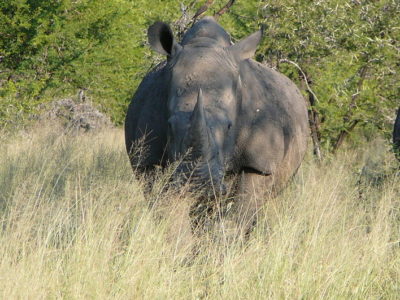
White Rhinoceros
The second largest animal on the land!

Wolf
Thought to date back more than 300,000 years!
Newest Animals that Start with the Letter W
Whe most recently added Animals that start with the letter W.

Western Kingbird
Western kingbirds have hidden red crown feathers that they can raise when threatened!
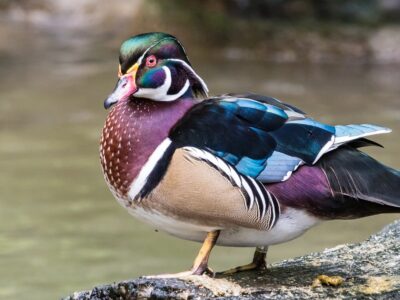
Wood Duck
Adult male wood ducks sport a striking red eye and bill year-round!
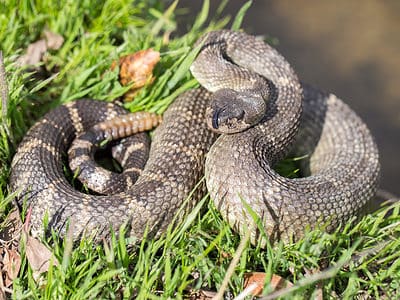
Western Rattlesnake (Northern Pacific Rattlesnake)
Western rattlesnakes are shy and try to avoid people whenever possible.

Animal by Letter Lists
- Animals that Start with A
- Animals that Start with B
- Animals that Start with C
- Animals that Start with D
- Animals that Start with E
- Animals that Start with F
- Animals that Start with G
- Animals that Start with H
- Animals that Start with I
- Animals that Start with J
- Animals that Start with K
- Animals that Start with L
- Animals that Start with M
- Animals that Start with N
- Animals that Start with O
- Animals that Start with P
- Animals that Start with Q
- Animals that Start with R
- Animals that Start with S
- Animals that Start with T
- Animals that Start with U
- Animals that Start with V
- Animals that Start with W
- Animals that Start with X
- Animals that Start with Y
- Animals that Start with Z
Thank you for reading! Have some feedback for us? Contact the AZ Animals editorial team.






